First: Biological reconstruction
- allograft
- frozen recycled autograft
- in vitro high-dose irradiated autograft
Second: Tumor prosthesis
artificial metal joints.
Third: Bone prosthesis composite
Allogeneic bone, frozen and radioactive autogenous bone are the main part with an artificial joint being assembled.
In the early years of biological reconstruction, allograft was used for reconstruction because recycled autograft had not yet developed. The allograft bone preserved at low temperature has the excellent bone structure to provide weight support and retains proteins (such as BMP-2) that promote stem cell differentiation, making it a fairly effective and natural biological stent. However, due to the lack of sources of allograft bones (the low willingness of public donation), and because of varied bone size and shape of patients’ bone, there are limitations on clinical use.
for patients whose bones have not been completely destroyed, we can remove these tumor-filled but still good-textured bones, do some special treatment to kill the tumor, and obtain a clean bone.
by PQ WuWhat is recycled autograft? As we know, bone cancer is a tumor that grows inside or on the surface of a bone, but in general, bones that grow a tumor are not necessarily quite damaged by the tumor. Even in some osteoblastic osteosarcomas, more bones grow as a result of tumors.
Therefore, for patients whose bones have not been completely destroyed, we can remove these tumor-filled but still good-textured bones, do some special treatment to kill the tumor, and obtain a clean bone. It's a bit like resource recycling, so it's called 'recycled' autograft. The biggest advantage of this approach is that it comes from the patient's own bones, so we won’t worry about the size and shape of the bones neither the spread of disease.
We can take a few minutes to watch the following short film for a preliminary understanding of recycled autograft:
In general, we have two tools for clinical inactivation, including extracorporeal irradiation and liquid nitrogen ultra-low temperature freezing. In addition, hospitals abroad also use high-pressure disinfection pot, Pasteur heating method, alcohol, and other ways.
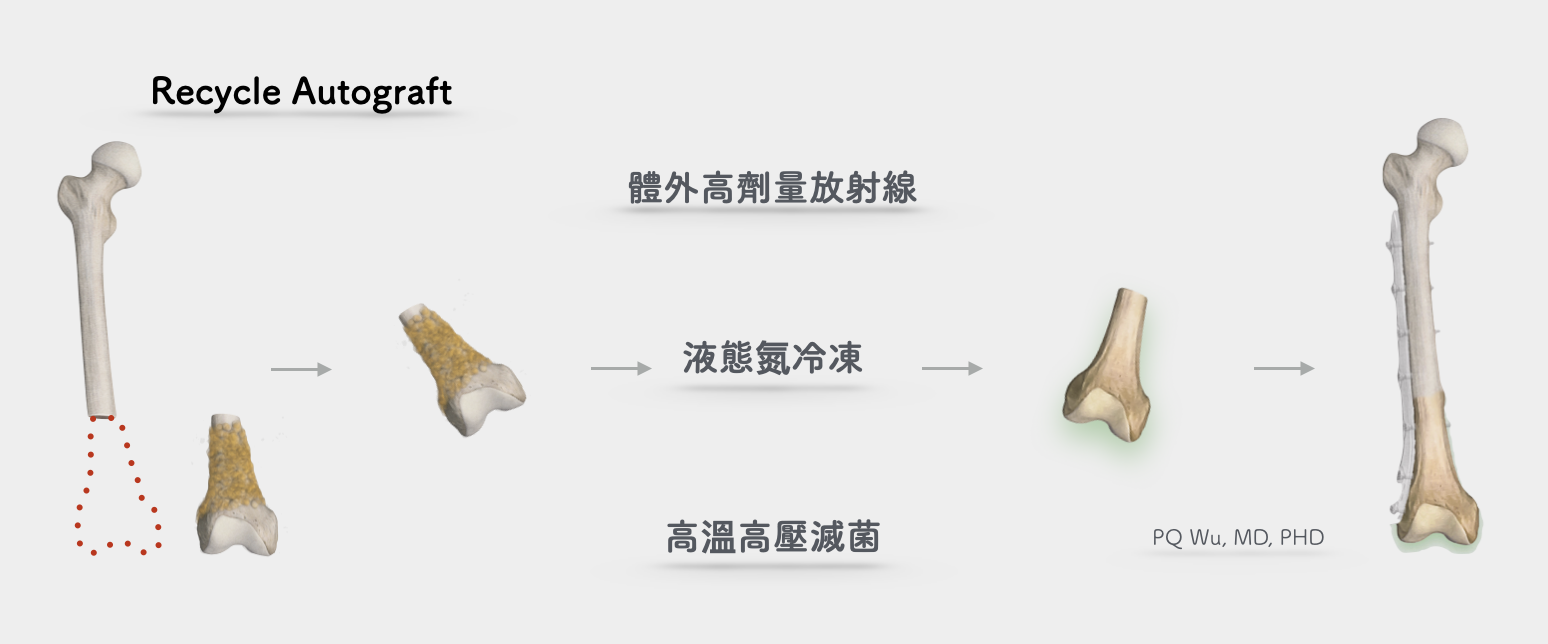
Eliminate the tumor at one time with high doses of radiation to regain a clean bon
by PQ Wu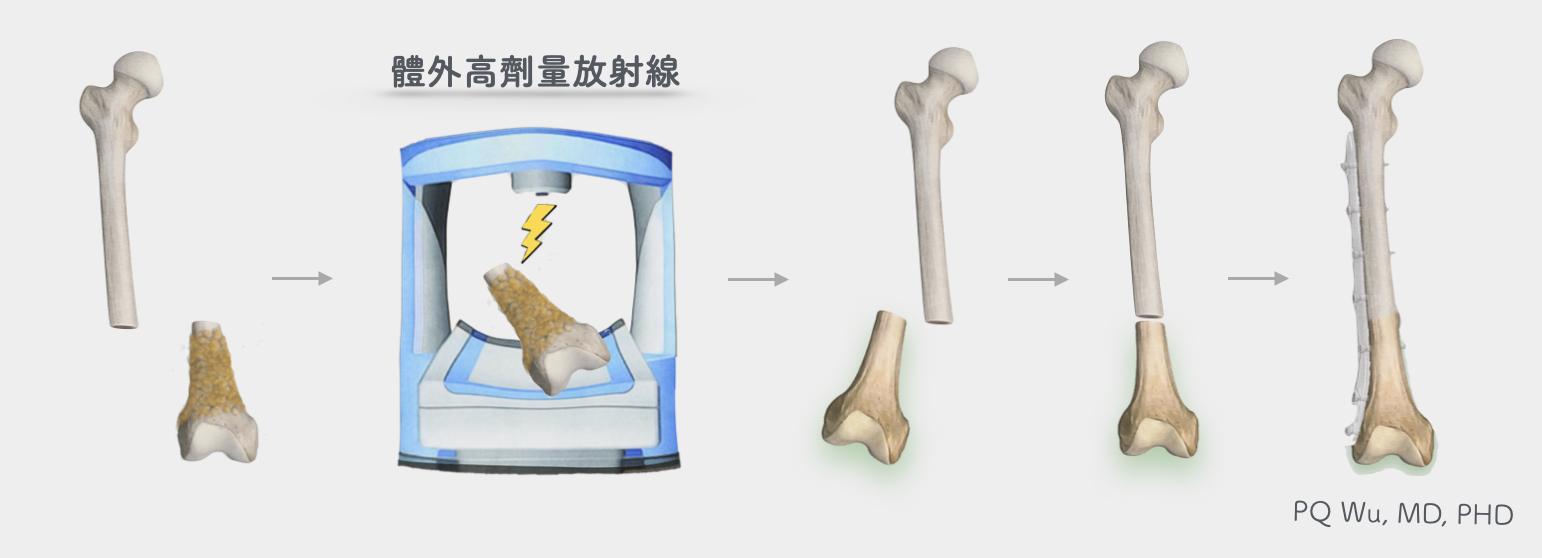
Extracorporeal irradiation brings the tumor bones into a machine with high doses of radiation (about 10,000 to 30,000 Rad, 2 to 6 times the dose of general cancer treatment) to kill the tumor completely. The duration of exposure is about 20 to 30 minutes, depending on the size and shape of the tumor. The history of extracorporeal irradiation was started in 1968 A.D. by two Israeli doctors, Dr. Spira and Dr. Lubin, on malignant osteomas treatments for two patients. Gradually, because of its good effectiveness, it began to adopt widely around the world.
The Orthopedic Department at Taipei Veterans General Hospital (at the time before the Therapeutical and Research Center of Musculoskeletal was established) first used it in 1991 by Vice President TX Chen. According to more complete recent data, from 1998 to 2012, a total of 79 patients with highly malignant osteosarcoma were biologically reconstructed. The total patients subjected to Extracorporeal irradiation in Taipei Veterans General Hospital were estimated to be greater than 200.
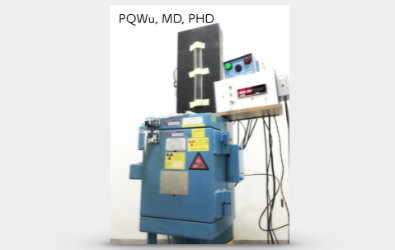
Machine for Extracorporeal irradiation used in Therapeutical and Research Center of Musculoskeletal Tumor at Taipei Veterans General Hospital
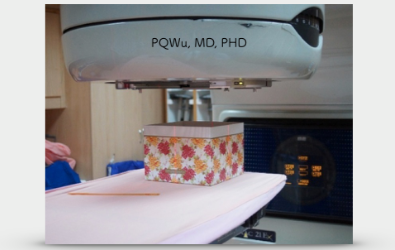
Radiation therapy machines for clinical use
Eliminate the tumor at one time with minus 196 degrees Celsius liquid nitrogen to regain a clean bone.
by PQ Wu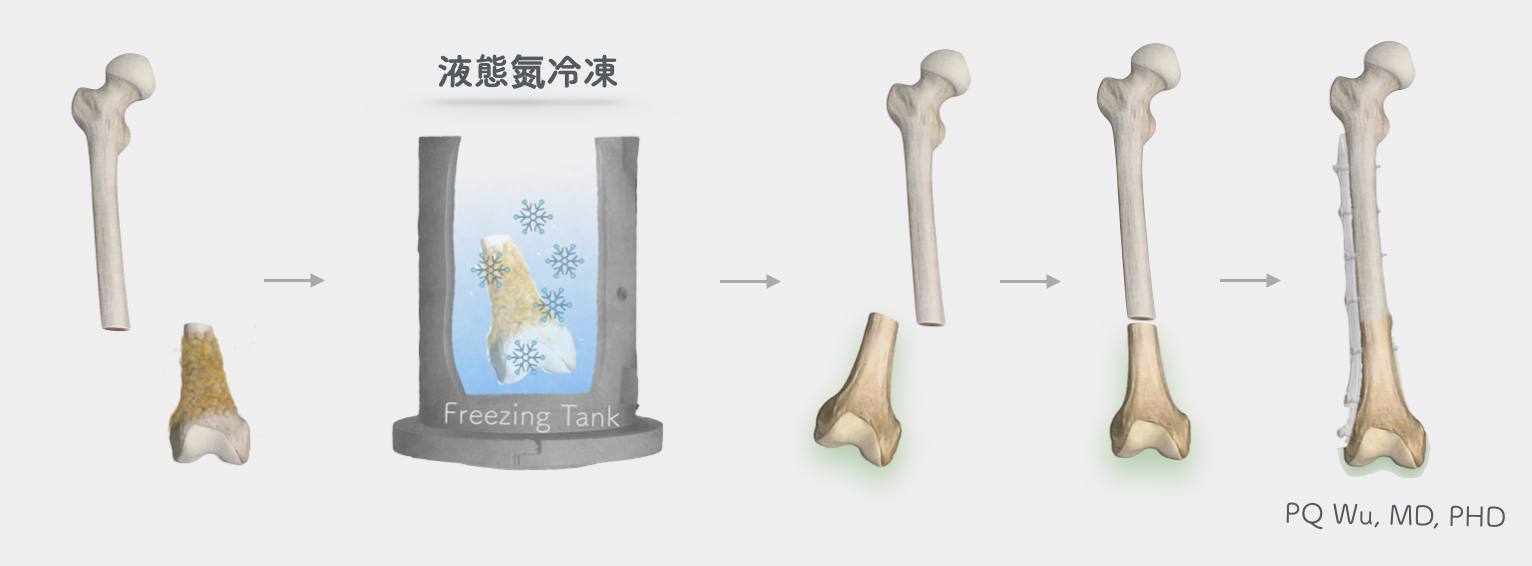
Biological reconstruction with frozen recycled autograft applies the bones with tumor into minus -196 degrees Celsius liquid nitrogen for 20 minutes to ensure that the central temperature of the tumor reaches the lowest temperature. Subsequently, the bones with the tumor were slowly thawed at room temperature for about 15 minutes. In this rapid freezing and slow thawing process, water molecules in cells can form large chunks of ice crystals and destroy tumor cells.
Frozen recycled autograft was first used for severe malignant osteosarcoma in 2001 by Japanese professor Tsuchiya Hiroyuki at Kanazawa University. He reported the success in the ISOLS Conference (International Society of Limb Salvage Conference, the world's most important bone tumor conference) in Korea in 2005. Therefore, in 2007, my teacher, Dr. WM Chen, went to Japan to share our extracorporeal irradiation technology in exchange of the frozen recycled autograft technology and brought it back to Taiwan. This visit also laid the good friendship between the osteosarcoma center in Taipei Veterans General Hospital and the plastic surgery department in Kanazawa University! (Note: Our orthopedic department is called the plastic surgery department in Japan).
Combined with other malignant bone tumors, the total number of patients subjected to recycled autograft in Taipei Veterans General Hospital was estimated to be greater than 200 patients, exceeding other cancer centers in the world!
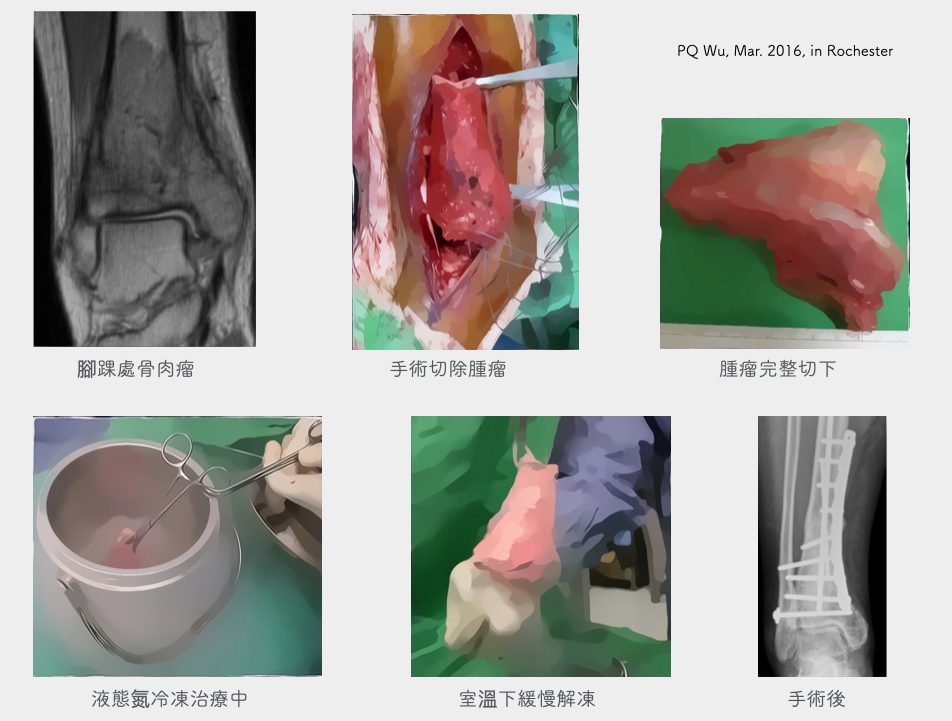
We have nearly 20 years of experience in extracorporeal irradiation and 16 years of experience in liquid nitrogen therapy in 2005. At present, in the Therapeutical and Research Center of Musculoskeletal Tumor at Taipei Veterans General Hospital, both surgical methods for osteosarcoma treatment have been applied to more than 400 patients, which is more than Japan and other countries. From our experience and the published medical literature worldwide, both methods are quite reliable to treat osteosarcoma.
However, advantages and disadvantages are involved in anything. Possible clinical complications of biological reconstruction will be discussed in a separate article.


